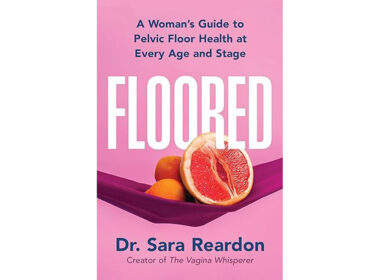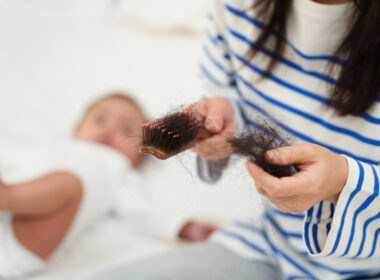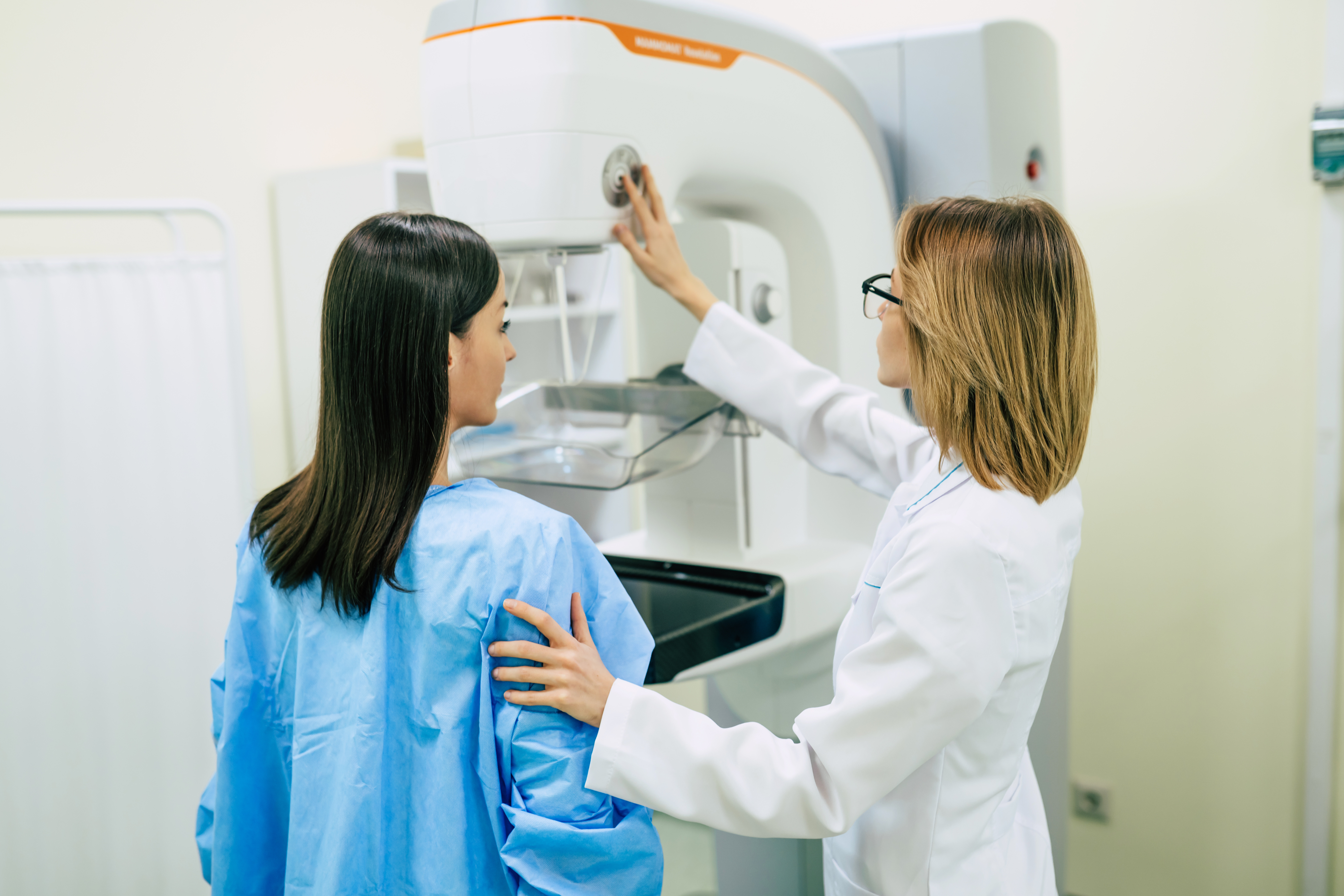Many women and couples are told that in-vitro fertilization (IVF), the creation of babies in a lab with sperm and eggs retrieved from intended parents or gamete donors, is their only option for overcoming infertility. And many of these people assume or are outright told that if they “need” IVF once, they’ll always need it to conceive. For example, one London-based doctor was told that her chances of natural conception at age 43 after using IVF to conceive previously were “less than 1%.”
But stories are slowly surfacing of women who conceived naturally after previously undergoing some sort of assisted reproductive technology (ART) like IVF. American actress Chrissy Teigen has one such story. According to Buzzfeed, she shared, “I never ever ever ever ever thought I could [conceive naturally],” and yet, she did! Could a woman’s chances of conceiving naturally after IVF be higher than most people realize? And rather than an incredulous “How did this happen?” when a woman conceives naturally after previous IVF, should we perhaps be asking “Did she need to use ART in the first place?”
Research suggests natural conception rates after ART vary, but may be much higher than previously assumed
A group of researchers at University College London conducted a meta-analysis of the evidence on natural conception after successful ART treatment (meaning that ART resulted in a live birth) [1]. After screening thousands of studies, 11 studies were selected, and these included data from over 5000 women. Individual studies varied in methodology, rate of follow-up, type and outcome of fertility treatment, and population, but the rate of natural spontaneous conception following successful ART ranged from 12% to 33%.
How could previously infertile women conceive naturally after IVF?
How is it possible that up to one-third of women who were previously diagnosed with infertility–who then sought out expensive IVF or other ART procedures, and successfully gave birth to a healthy baby–could later conceive spontaneously? The study researchers considered three different hypotheses: 1) the possibility of ovarian stimulation from IVF treatment improving ovarian function; 2) separately or in tandem, pregnancy-induced positive changes in the body (such as endometrial lesion regression, for certain women); and 3) decreased stress due to relief over a successful ART-conceived pregnancy [2].
While some or all of these hypotheses may be true, there’s another factor to consider that often goes overlooked in mainstream infertility treatment: when a woman’s body is well-supported in healthy ways that cooperate with its natural design, it can often do what it is supposed to do, i.e., conceive, carry, and deliver a healthy baby. Rather than an incredulous “How did this happen?” when a woman conceives naturally after previous IVF, perhaps we should be asking “Did she need to use ART in the first place?” At a minimum, we should wonder, “What changed?” and consider what we can do to spare women the significant financial costs, health risks to moms and babies, and heartbreak of IVF, by helping women conceive naturally.
Women deserve to have their underlying cause(s) of infertility discovered and addressed
Dr. Susan Caldwell is a family medicine physician trained in a form of restorative reproductive medicine (RRM) known as NaProTechnology (“NaPro”). Although Dr. Caldwell conceived three of her own children via IVF, she now advocates for a RRM approach to treating infertility. On her blog, she writes:
“Most women who are diagnosed with infertility have several minor diseases or deficiencies that add up to cause infertility. Women with infertility don’t always feel unhealthy, yet infertility is a sign that health is lacking. This is where the digging begins. Using an individualized approach, we must dig beneath the surface to find the underlying causes of infertility.”
In other words, for doctors trained in RRM like Dr. Caldwell, infertility is best thought of as a symptom of a broader disorder or underlying cause (although in mainstream infertility medicine, many women are given just that– “unexplained fertility”– as a diagnosis). Thus, touting IVF and other forms of ART as “infertility treatment” is a misnomer. IVF’s aim is not to treat infertility, but rather to induce pregnancy. While the woman undergoing IVF may be left with a healthy baby, she is just as likely to be left with more heartbreak, more health issues, and fewer answers.
A doctor who previously conceived via IVF now believes “the vast majority of infertile couples do not need IVF to conceive”
So the answer to the question, “Is ART necessary in the first place?” may often be No. As Dr. Caldwell noted in an email to Natural Womanhood:
“I’ve come to see pregnancy as the time when the woman’s HPO (hypothalamic-pituitary-ovarian) system finally becomes fully mature (in sync, if you will), and the woman’s body realizes the reproductive potential for which it was created. We see this also in the breast tissue: a woman’s breasts do not reach full maturity until the third trimester of pregnancy and begin to produce breast milk. Once a woman has had a pregnancy, her body is now mature and ‘primed’ for another pregnancy. Drawing from my personal IVF journey and the fertility journeys of my patients, I have come to the conclusion that the vast majority of infertile couples do not need IVF to conceive. When the woman’s health is nurtured and her body/reproductive system is allowed to heal/grow (often after many years of contraceptives), most patients become pregnant without the aggressive approach of ART/IVF. This is evidenced by the low success rate of about 30% [per cycle] for IVF compared to the much higher (70% ish) success rate of Naprotechnology.”
Utilizing a fertility awareness method in tandem with RRM, and combining it all with healthy lifestyle practices and good nutrition, empowers a woman with knowledge about her own body and gives her the tools to potentially achieve whole-body health–not just a forced pregnancy. Of course, infertility is a sorrowful reality for many couples, and sometimes, even going the restorative reproductive medicine route via NaPro, FEMM, or NEO does not result in a successful pregnancy. But regardless of whether a baby results from RRM, many couples appreciate finding answers for their infertility, and the improved health they may experience in the process.
The bottom line
In contrast, IVF clinics, mainstream medicine, and ART advocates point to a live birth as proof that ART “worked;” that it was a successful treatment. And, according to the research cited above, up to 33% of women might conceive naturally after IVF or another form of ART. But the fact remains that in the majority of cases women do not conceive naturally after IVF. This further underscores the reality that their infertility was not actually treated by the ART procedure(s). As for the fortunate 33%, we owe it to them (and to all couples struggling with infertility) to learn more about the underlying causes of infertility and how to truly heal them, to give every woman a chance at optimal health–and of conceiving naturally.
References:
[1] Annette Thwaites, Jennifer Hall, Geraldine Barrett, Judith Stephenson, How common is natural conception in women who have had a livebirth via assisted reproductive technology? Systematic review and meta-analysis, Human Reproduction, Volume 38, Issue 8, August 2023, Pages 1590–1600, https://doi.org/10.1093/humrep/dead121 [2] Brigitte Leeners, Fabia Damaso, Nicole Ochsenbein-Kölble, Cindy Farquhar, The effect of pregnancy on endometriosis—facts or fiction?, Human Reproduction Update, Volume 24, Issue 3, May-June 2018, Pages 290–299, https://doi.org/10.1093/humupd/dmy004Additional Reading:
The dark side of the IVF industry, from a survivor







